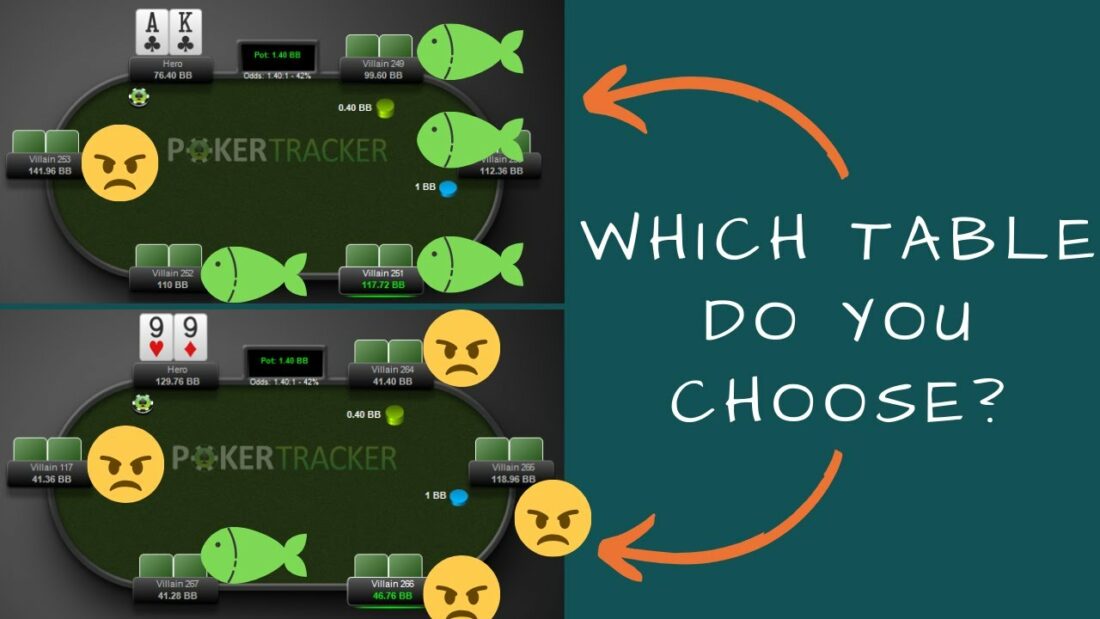The Art of Table Selection in Poker
Introduction:
Poker, often dubbed as a game of skill, strategy, and psychology, encompasses various elements that contribute to a player’s success. While mastering the technical aspects of the game is crucial, one often overlooked yet essential skill is table selection. Choosing the right table can significantly impact your profitability and overall enjoyment of the game. In this article, we delve into the art of table selection in poker and explore strategies to maximize your potential at the felt.
Understanding Table Dynamics:
Before diving into the intricacies of table selection, it’s essential to understand the dynamics at play. Poker tables can vary greatly in terms of skill level, playing styles, and overall atmosphere. Some tables may consist of recreational players looking for a fun night out, while others may host seasoned professionals grinding for profit. Recognizing these differences is key to making informed decisions about where to sit.
Factors to Consider:
- Skill Level: Assessing the skill level of your opponents is paramount. Ideally, you want to play at a table where you have an edge over the competition. Look for tables with players who are less experienced or prone to making mistakes. This can increase your chances of profitability in the long run.
- Stack Sizes: Pay attention to the average stack sizes at the table. Playing at a table with deep stacks allows for more strategic flexibility and room to maneuver. Conversely, shallow stacks may lead to more volatile and high-pressure situations.
- Playing Styles: Different players have distinct playing styles, ranging from tight and conservative to loose and aggressive. Observing the dynamics of the table can help you identify which style predominates. Adjust your strategy accordingly to exploit the tendencies of your opponents.
- Table Image: Consider your own table image and how it interacts with the players around you. If you’ve been perceived as tight and conservative, you may find success at a table with aggressive opponents who are likely to overplay their hands against you.
Strategies for Table Selection:
- Scouting Multiple Tables: Resist the urge to settle at the first table you encounter. Instead, take the time to scout multiple tables and assess their dynamics. Look for favorable conditions that align with your playing style and objectives.
- Utilize Waiting Lists: Many poker rooms offer waiting lists for popular games. Take advantage of this feature to queue up for tables that meet your criteria. Patience is a virtue in poker, and waiting for the right opportunity can pay dividends in the long run.
- Stay Flexible: Table selection is not a one-time decision but an ongoing process. Continuously monitor the dynamics of your current table and be prepared to switch tables if conditions deteriorate or better opportunities arise elsewhere.
- Maintain a Positive Mindset: Regardless of the table you choose, maintain a positive mindset and focus on making the best decisions possible. Variance is inherent in poker, and not every session will be profitable. Stay disciplined and trust in your abilities to navigate any challenges that arise.
Conclusion:
In the ever-evolving landscape of poker, mastering the art of table selection is a skill that can set you apart from the competition. By carefully assessing factors such as skill level, playing styles, and stack sizes, you can maximize your profitability and enjoyment of the game. Remember to stay patient, adaptable, and focused on making sound decisions at the table. With practice and perseverance, you’ll be well on your way to becoming a formidable force at the poker table.
In the end, table selection is not just about finding the softest games or the toughest opponents; it’s about finding the right balance that suits your individual preferences and goals as a poker player. So, the next time you take your seat at the felt, remember that where you sit can make all the difference.


No Comments